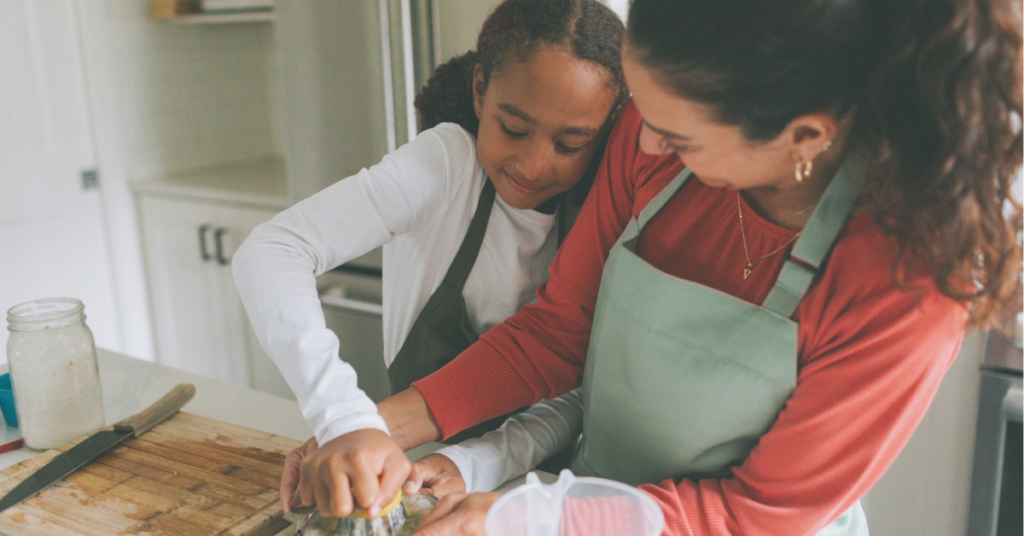The Heart of Emotional Awareness
We all want to be seen and feel heard. From the moment we are born, we communicate—long before we have words. Becoming a mother opened my eyes to just how early this need for connection begins. The expression goes that babies just eat, sleep, and cry, but I’ve learned that they do so much more. They are trying to be understood.
I remember the first time I truly mirrored my daughter’s emotions. Instead of trying to distract her when she was upset, I softened my face, frowned when she did, and let my expression match hers. The result? She paused. She looked at me as if to say, You see me. That connection was electric. It made me realise something profound: We often rush to fix, to distract, to make uncomfortable feelings go away. But what we all really need—children and adults alike—is to feel seen.
What Is Emotional Awareness & Why Does It Matter?

Emotional awareness is the ability to recognise and understand our own emotions and the emotions of others. It’s a critical skill that shapes how we interact with the world, build relationships, and handle challenges.
Research has consistently shown that emotional intelligence (EQ) is just as important—if not more so—than cognitive intelligence (IQ) when it comes to long-term success and well-being. A study published in Child Development found that children with strong social-emotional skills were more likely to succeed academically, have healthier relationships, and experience long-term career success (Jones, Greenberg, & Crowley, 2015).
But beyond success, emotional awareness helps children feel seen and understood. And isn’t that what we all want? To know our emotions—and by extension, our experiences—matter?
The Connection Between Emotional Awareness and Mental Health
Mental health challenges are on the rise. According to the CDC, anxiety and depression among children and adolescents have increased significantly over the past decade (CDC, 2023). Studies show that developing emotional awareness can significantly reduce stress, anxiety, and depression (Saarni, 1999). When children learn to identify and express their emotions in a healthy way, they are better equipped to manage life’s inevitable ups and downs.
For parents, modelling emotional awareness is just as crucial. When we show our children that it’s okay to feel—and that all emotions have a place—we help them build emotional resilience and self-acceptance.
How to Foster Emotional Awareness at Home

If emotional awareness isn’t something you were taught growing up, it can feel challenging to incorporate it into daily life. But the good news is, small shifts make a big difference. Here are some simple ways to foster emotional awareness at home:
1. Name Your Feelings (and Help Your Child Name Theirs)
Instead of suppressing emotions, practice naming them. Saying “I feel frustrated right now” or “I see you’re feeling disappointed” helps normalise emotions and teaches children to articulate their feelings instead of bottling them up.
I started doing this with my daughter, even though she’s still so little. When she gets upset, I gently name what she might be feeling: “It looks like you’re frustrated. It’s okay to feel that way.” It may seem simple, but it’s already making a difference in how she reacts.
2. Create a Culture of Open Conversations
Encourage open discussions about emotions without judgment. Ask open-ended questions like, “What made you feel happy today?” or “Did anything make you feel upset?” This builds emotional vocabulary and strengthens the parent-child bond.
3. Model Healthy Coping Strategies
Children learn by watching us. Show them how you manage big emotions in a healthy way—whether it’s taking deep breaths, journaling, or going for a walk when feeling overwhelmed.
4. Validate Emotions Instead of Dismissing Them
Phrases like “You’re okay” or “Don’t cry” can unintentionally teach children to suppress their feelings. Instead, try “It’s okay to feel sad. I’m here with you.” This simple shift fosters emotional safety and connection.

Emotional Awareness Isn’t Just for Kids—It’s for Us Too
Parenting has a way of exposing our own emotional blind spots. If we’ve spent years pushing down emotions, learning to embrace them can feel uncomfortable. But the more we allow ourselves to experience and process emotions, the better we can guide our children in doing the same.
Just the other day, I caught myself rushing through the motions of bedtime, trying to get everything done. My daughter, sensing my tension, became restless. Instead of hurrying her along, I paused, took a deep breath, and softened my tone. “I’m feeling overwhelmed right now, but I’m happy to be here with you.” I saw her little body relax instantly. Our children pick up on our emotions more than we realise.
It’s not about being perfect; it’s about being present. Emotional awareness isn’t a destination—it’s an ongoing journey of learning, growing, and healing together.
Join the Conversation
How do you nurture emotional awareness in your home? Have you noticed a shift in your child’s behaviour when emotions are acknowledged? Let’s talk in the comments—I’d love to hear your experiences!
📩 Stay Connected! Want more reflections on mindful parenting, emotional awareness, and slowing down with your child? Sign up for my email list and receive exclusive content, free resources, and heartfelt insights straight to your inbox!



